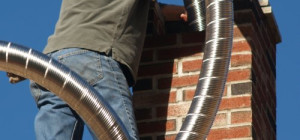In the wide world of signages, exhibitions, model making and various architectural applications, a couple of materials stand out for their unique properties: foam board and PVC board. However, there’s often confusion about these two, mainly whether they are the same. So, is foam board the same as PVC board? The straightforward answer is no. Though they may have some overlapping uses, their properties, composition, and functionality are distinctly different.
Composition and Features of Foam Board
Foam board, also known as foam core or foamex, is typically made up of a lightweight, polystyrene foam centre sandwiched between two layers of smooth, thin card. This composition results in a rigid yet lightweight material that is predominantly used for indoor applications.
One of the main benefits of foam board is its workability. It’s easy to cut, making it a popular choice for model-making and craft projects. Foam boards also come in a variety of colours and thicknesses, which increases their adaptability to different artistic and creative requirements.
Furthermore, the foam board’s light weight makes it ideal for temporary signs and displays, such as in trade shows or academic presentations. They also offer a degree of thermal insulation and soundproofing, though not as much as some other specialist materials.
However, foam board does have limitations. It’s not particularly durable compared to other materials, and it doesn’t perform well in high-moisture or outdoor conditions, where it can warp or become damaged.
Properties and Uses of PVC Board
On the other hand, PVC (polyvinyl chloride) board is made from a plastic resin that’s both durable and versatile. It’s available in a range of thicknesses and sizes, much like foam board. However, its properties make it suitable for a broader range of applications, both indoor and outdoor.
One key advantage of PVC board is its excellent weather resistance, which makes it an ideal material for outdoor signage and displays. Unlike foam board, PVC can withstand rain, snow, and direct sunlight without sustaining significant damage.
PVC board is also easier to clean and maintain, making it a practical choice for high-traffic areas or locations that require frequent cleaning, such as hospitals or food service areas. In addition, its strength and durability make it suitable for more permanent installations, where a longer lifespan is required.
One company, Simply Plastics, offers a range of PVC boards which demonstrates the versatility and adaptability of this material. Here, you can find PVC sheets in a variety of thicknesses, finishes, and colours, demonstrating its wide range of potential applications.
Making the Right Choice
Deciding between foam board and PVC board depends largely on your specific needs. If you’re working on a lightweight, temporary indoor project, such as a school presentation or trade show booth, foam board’s ease of use and lightness may make it the ideal choice.
However, if your project involves outdoor conditions, or if you need a more durable, longer-lasting material, PVC board is likely to be the more suitable option. Its weather-resistant properties and longevity make it the go-to material for more permanent, outdoor applications.
Concluding Thoughts
While both foam board and PVC board have their unique properties and uses, they are not the same material. Foam board excels in light, indoor, and temporary applications, while PVC board stands out for its durability and suitability for outdoor use. By understanding the strengths and limitations of each, you can ensure you select the right material for your project.







